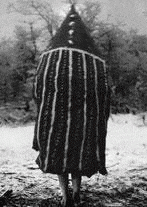
 |
|||||||
 |
|||||||
 |
|||||||
 |
|||||||
 |
|||||||
 |
|||||||
 |
|||||||
| sitemap | |||||||

Il figlio delle sorelle (Son of the Sisters), Leonardo G. Luccone’s second novel, received widespread acclaim by literary critics, with articles about the novel appearing in all the major Italian newspapers and journals. In la Repubblica, author Michela Marzano writes: “As with his debut novel, La casa mangia le parole, published in 2019, [Luccone] hybridizes the narration and experiments with a new way of telling, intersecting the past and the present, putting them on the same plane. Verbal games, lexical metamorphoses, assonances: in Luccone’s prose everything contributes to the construction of original expressive elements, with a constant eye to European literature of the early twentieth century.” Eduardo Savarese, in Il Riformista, highlights the strength of Luccone’s use of dialogue: “Il figlio delle sorelle, thanks to a writing always on the borders of the anxious fleetingness of orality and the unrepeatable performance characteristic of the spoken and listened-to voice…manages to mend the tatters of our family lives, of the roles we insist on fulfilling, of the suffering engendered by impossible expectations.” Nicola H. Cosentino in la Lettura highlights the dramatic aspects of the novel: “Through its architecture—concentrated dialogues, intense monologues, the division into three acts—Il figlio delle sorelle is reminiscent of a piece of theatre. In particular it has something of Harold Pinter and his characteristic blurring of reason and identity.” Beneath a contemporary story that confronts the traumas of the patriarchy and the difficulties of many adult couples in having children, the narrative fabric of Son of the Sisters is dense with references to classical myth. The novel’s second section, “The Descent,” is constructed as a retelling of the myth of Persephone, following the lesser-known Calabrian-Sicilian tradition which envisions Persephone (represented by Sabrina in the novel) at the center of the scene as the queen of the Underworld and the inspirer of a matrilineal society. Luccone makes his own the tradition of James Joyce (in particular that of Finnegans Wake), weaving a language without a center, a language that reinterprets myth and that finds its stability only through diallage, recursion, and reiteration.
Back to Il figlio delle sorelle
|
|
